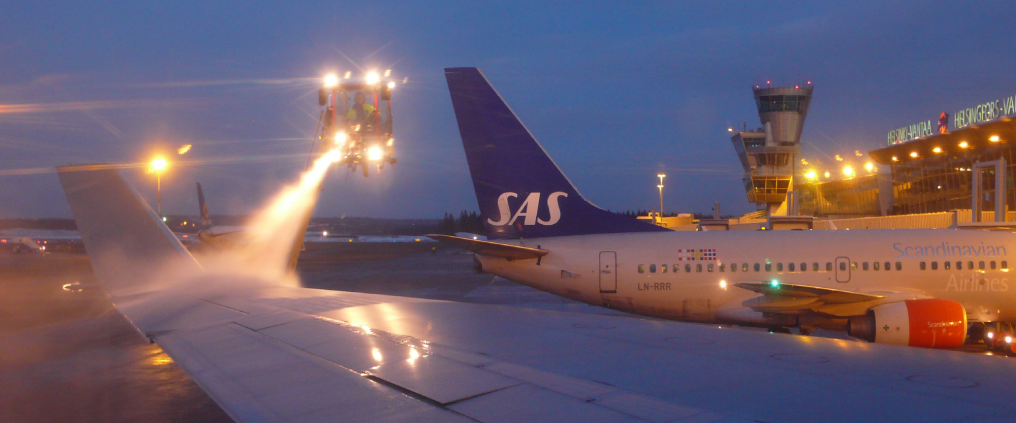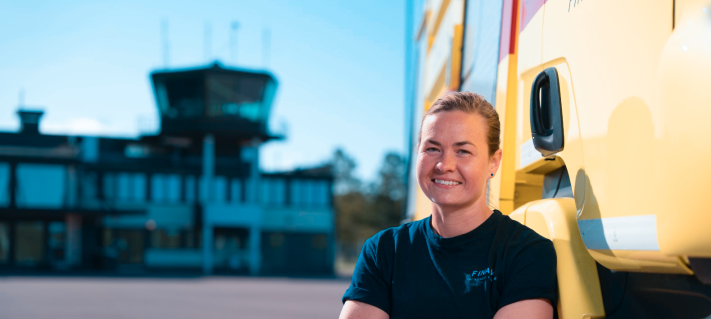For safety reasons, snow, ice, and frost are removed from the wings and the surface of the aircraft. Without the procedure, the upward force of the aircraft decreases, and wind resistance and the overall lift-off weight increase. Moreover, the engines may be damaged.
The procedure does not only remove the ice, but aims to prevent further frosting. During cruising, fuel in the wings freezes, and may cause the surface of the wing to freeze after landing in humid air conditions, even in relatively warm weather.
De-icing and anti-icing treatment is mainly performed during cold seasons, under freezing conditions. The treatment is occasionally needed also in late spring, and early autumn.
De-icing has been performed ever since the beginning of aviation, in particular in the northern hemisphere. When aircraft were small and flight schedules loose, snow was removed with brushes.
As air traffic increased and aircraft became larger, various methods were developed for de-icing and snow removal. The currently used glycol solution that gives longer-lasting protection was introduced in the 1990s.
The aerodynamic form of current aircraft types requires the wing and control surfaces to be clear of snow and ice. The current trend is that aircraft sizes are increasing and wing profiles are getting slimmer, whilst at the same time carrying a greater mass than previous aircraft types.
How to prevent de-icing agents from spreading to the environment?
The de-icing operations of aircraft at the Helsinki Airport comply with the environmental and security regulations issued by the authorities, and the good and sustainable practices jointly agreed upon by Finavia and the airlines.
Helsinki Airport has designated areas where de-icing operations are allowed. All de-icing areas are connected to the sewer system, and, moreover, all de-icing agents are gathered.
The original movement area and the first runway were built more than 60 years ago. Regardless of the dated structures, the Airport aims at reaching as good an end result as possible by developing the processes and repairing the old de-icing areas.
All new and upgraded structures comply with current requirements. As soon as the Airport introduces the new de-icing areas, the old ones will be completely decommissioned from de-icing.
The operations will be more centralised and closer to the runways at remote de-icing areas, where recovery will be efficient.
In addition to developing the processes, upgrading the structures, and concentrating the operations, Helsinki Airport recovers both glycol-containing snow and glycol at the apron. This is carried out by using specialised equipment, suction vehicles and snow gathering vehicles that have been especially developed for these operations.
Read more about environmental effects of de-icing in our Annual Reports.



